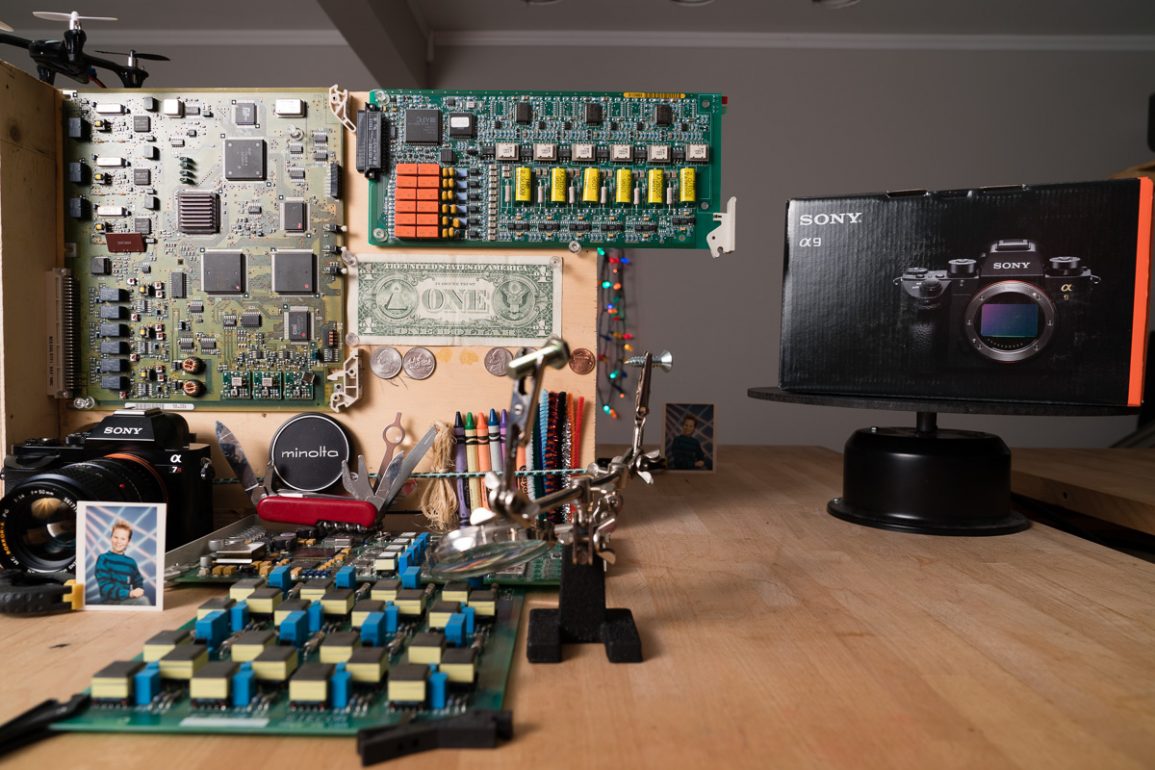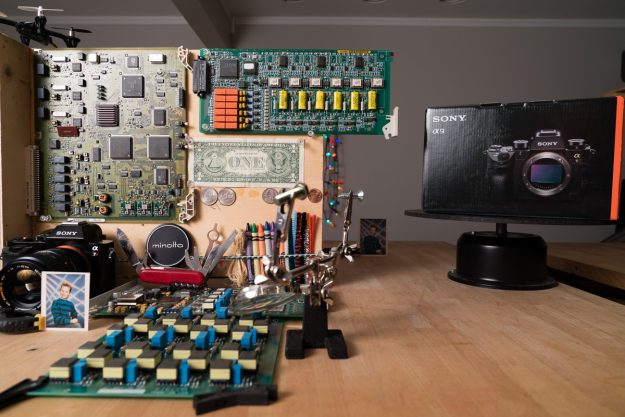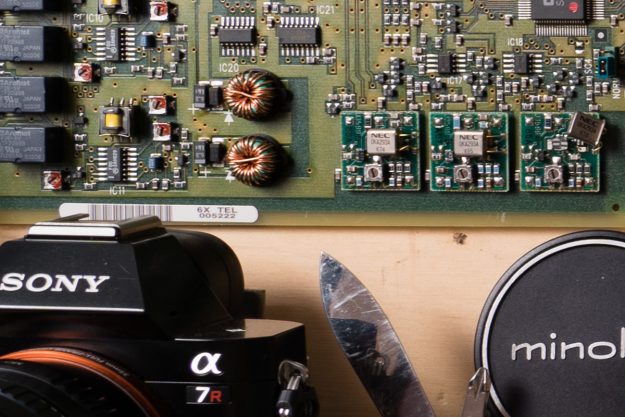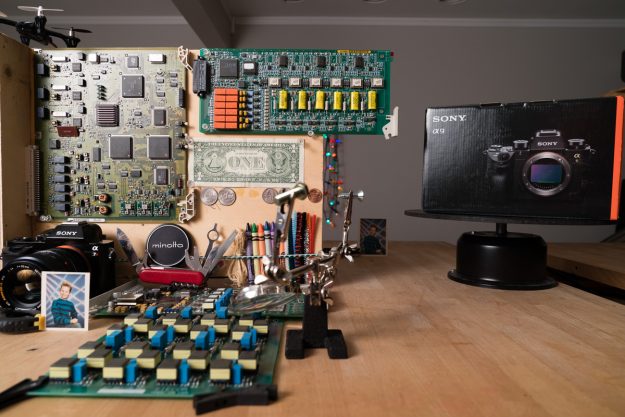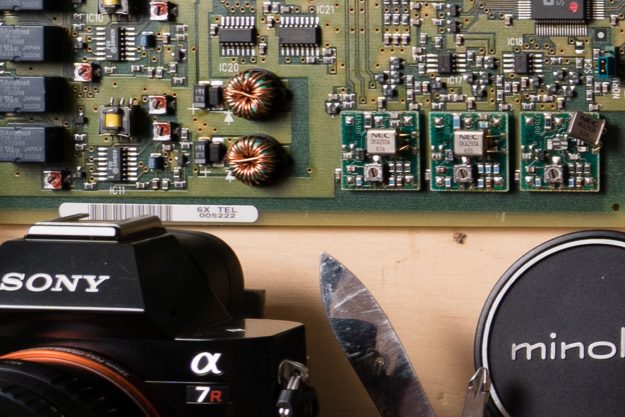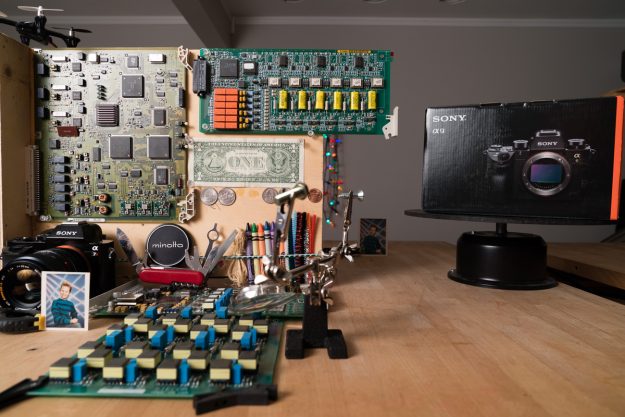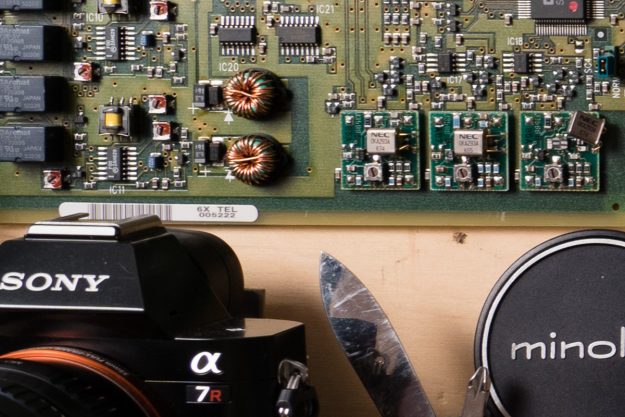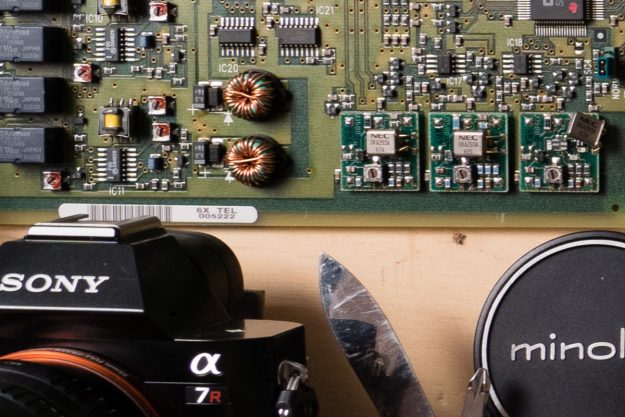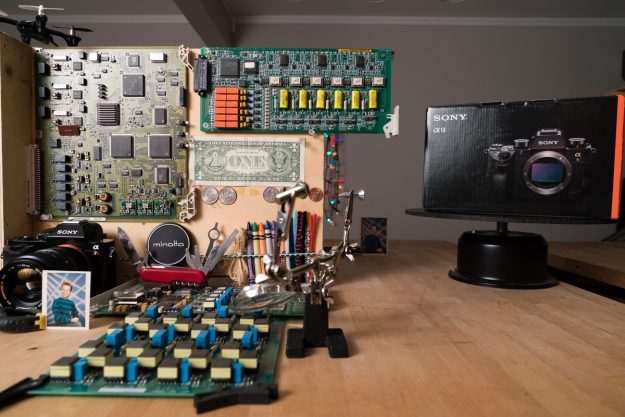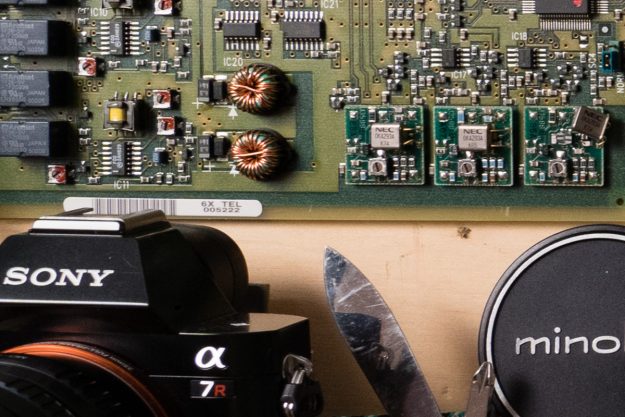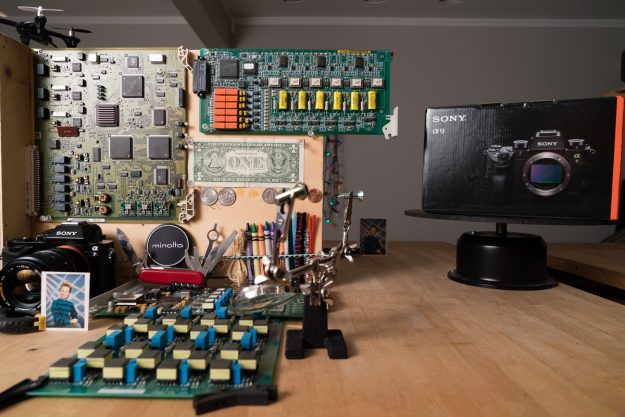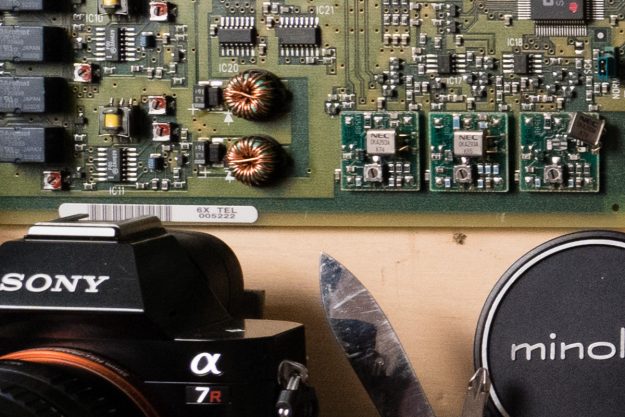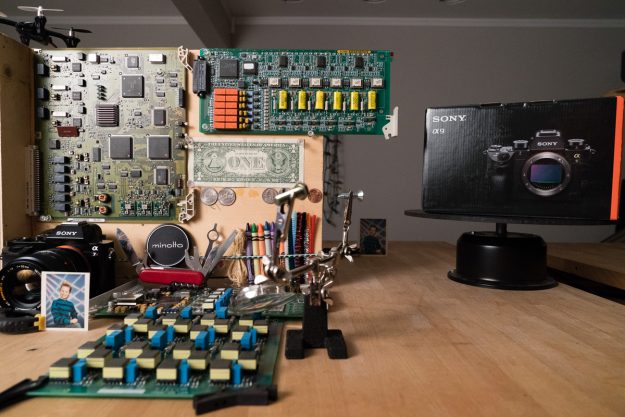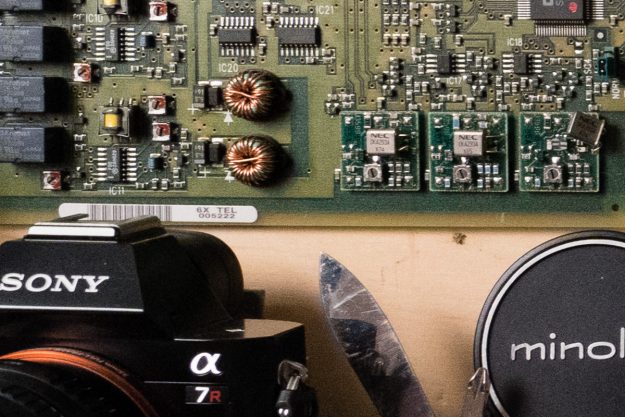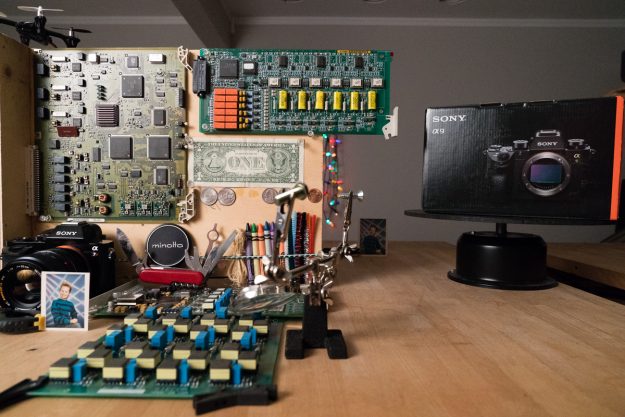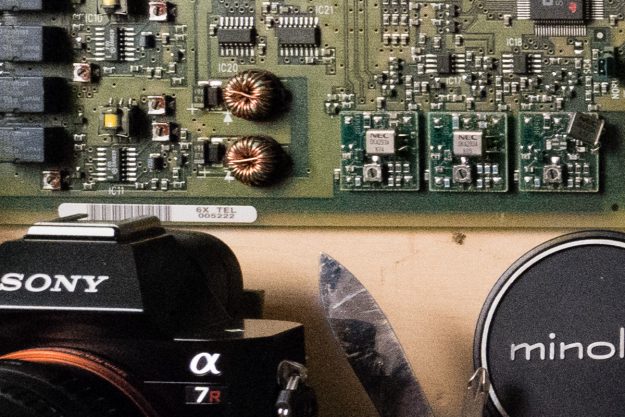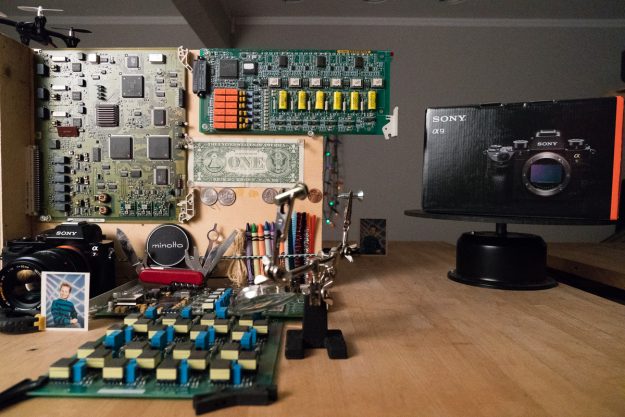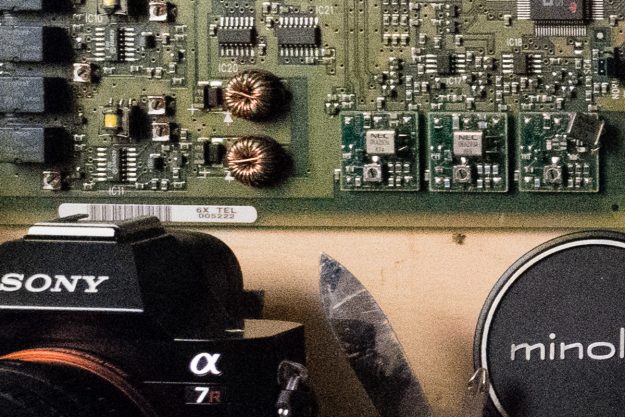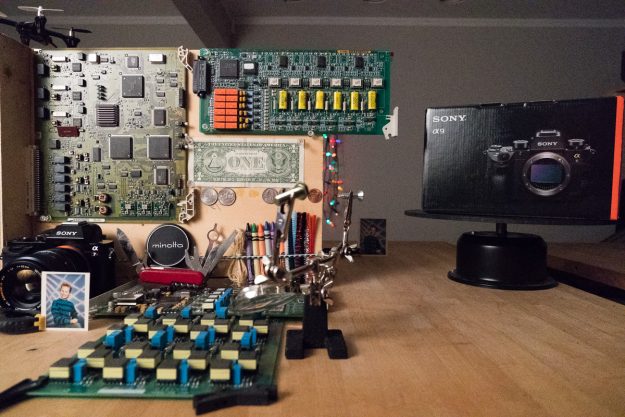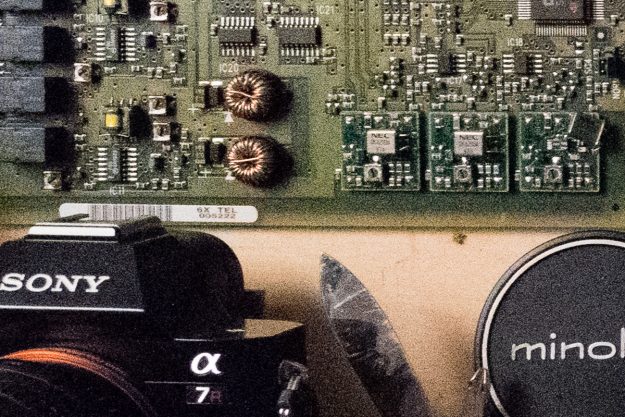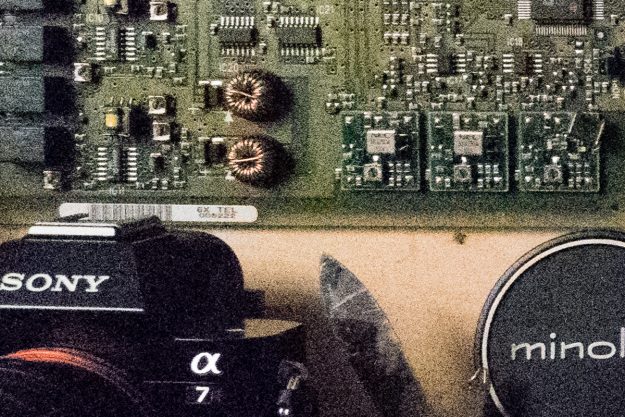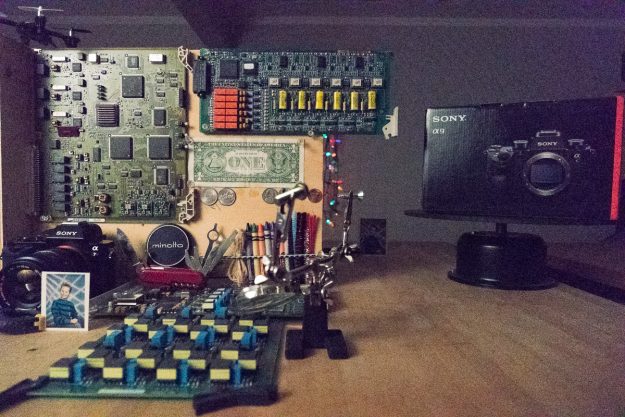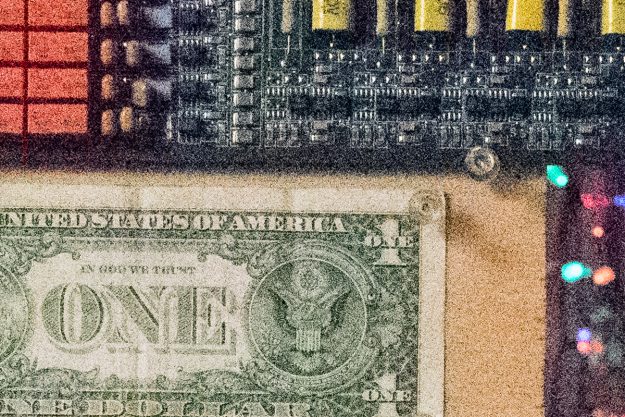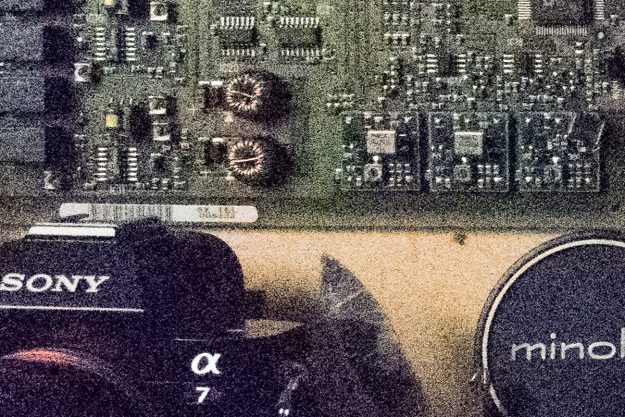Hello! In this quick article I’m going to show you what the Sony A9 can do in the ISO testing department using my most recent Lab Scene. The ISO spread being tested in this article on the Sony A9 is from ISO 100 all the way to a max of ISO 204800 using Raw image Quality.
For reference, the Sony A9 Max ISO of 204800, falls in the middle between the Sony A7r II’s max output of (102,400), and the Sony A7s II’s max output of (ISO 409,600). The new Sony A9 sensor being 24mp resolution, also falls in the middle of the A7r II (42mp), and the A7s II (12mp).
So, in the real world is the ISO 204,800 level even useable? I contend yes, but highly dependent on your resolution needs. If converting to BW for example, the noise often looks dramatic and can add to some scenes. If you only need a low resolution version of the image, then the high ISO levels can also be used more easily.
If you want the clean noise free look, then ISO 12800 is about the real world max I would say. If you can handle a little noise and your resolution use is not to extreme, then ISO 51,200 is where I would max out. Case in point; I have the Sony A9 Auto ISO currently set to ISO 100 (min) – ISO 51200 (Max), when walking around with it.
Then we have the extended range territory which pushes the sensor to the maximum values including ISO 102,400 and ISO 204,800… I only used these for testing so far.
When viewing the 100% crops in detail you can see the noise build as the ISO increases, but note the retention of detail and color overall. Then look at the full image again and note how it holds up even with the noise building.
Camera Settings
I had the Sony A9 set to RAW Quality for all these Lab ISO test photos. I also used a tri-pod, self timer, and had the aperture set to f/8. I used Lightroom to open the raw files and applied a medium contrast tone curve to the photos due to the lack of contrast. I did not apply any sharpening to these raw files, so they may look a tad soft to you, if you are used to see fully processed photos. I exported the files as Jpegs @ 80% quality, 1200px. The 100% Crops are ~1200px for reference, so be sure to click on them otherwise you are only seeing the 625px versions.
More on Raw files:
Raw image format files are not edited on the camera like Jpeg files. So they tend to look pretty flat and a little soft straight off the camera in comparison. Raw files really need to be processed to look like a jpeg, but you can achieve higher quality results doing the processing yourself, when compared to the camera. In addition, raw files also offer more information in the dynamic range and color areas, so processing can be pushed further than it could on a jpeg file while maintaining better quality. The raw file has more editing potential to put it another way…
Sony A9 – ISO Testing in the Lab
Sony A9 – ISO 100
Click Photos for ~1200px full version!
Sony A9 – ISO 200
Sony A9 – ISO 400
Sony A9 – ISO 800
Sony A9 – ISO 1600
Sony A9 – ISO 3200
Just starting to see a very slight amount of noise introduced.
Sony A9 – ISO 6400
The first signs of some noticeable noise can be seen here I would say.
Sony A9 – ISO 12800
This is about the limit for those looking to have clean images at ultra high resolutions. Very large prints for example, you might start to notice a bit of detail loss. Overall however, I would say ISO 12800 totally usable in almost cases.
Sony A9 – ISO 25,600
Here at 25,600 you can really start to see some visible noise in the 100% Crop, but be sure note how good the full Raw Quality image still looks.
Sony A9 – ISO 51,200
Here is where I have my Auto ISO maxed out. I would prefer to use lower ISO levels for sure, but this is still acceptable to me. I would rather get a sharp shot than get no shot at all. This would include pics of people in very low light situations like: at a wedding reception or in a church environment, around the camp fire, or on the street. For my purposes these days, it’s mostly the kids in low light situations where I want to the shots sharp! Sharp is better than cleaner and blurry, and often shutter speeds needed to bumped up with moving subjects which pushes the ISO levels up and up some more at times… Indoor sports is another example where the ISO levels can get pushed to the max in order to freeze the action.
Sony A9 – ISO 102,400
Now this is the higher limit extended range territory that is nice to have at times. I would only use this level if I had no tri-pod or flash, and just wanted to get the shot. At the end of the day the noise is still not that bad when looking at the full image. Some color variation loss is starting to become noticeable and a slight purple color cast is also starting to creep in.
Sony A9 – ISO 204,800
With the ISO 204,800 I notice a pretty significant loss in color variation and the purple color cast is easily noticeable. The purple cast being most noticeable in the darker areas of the scene. The noise is very apparent and even easy to see on the full image. In the 100% Crop you can still read all the letters on the dollar bill, which is very impressive overall.
Conclusions on Sony A9 ISO Lab Testing
Overall I am satisfied with the High ISO performance offered by the New Sony A9. The range is large and usable all the way to ISO 12,800 for large prints, and you can go well beyond that if your resolution needs are lower. For general photography I find the results really good, and when combined with fast glass, the numbers can easily be kept at or below ISO 12,800 for very clean results.
This is particularly useful for low light indoor sports for example, where the shutter speeds need to be high in order to freeze the action, and flash photography is not allowed or in usable range. Wedding photographers should be very satisfied with the high ISO performance on the Sony A9 as well in my opinion.
What would be the max useable ISO for you and your needs?
That is about it for this article everybody, but please feel free to ask questions and comment below, and I would love to hear your thoughts on the matter of max ISO use!!
I hope you got what you were looking for in this article, and have a great day,
Jay
Gear used for this testing:
Sony A9 @ BHPhoto
Sony FE 24-70mm f/2.8 GM Lens @ BHPhoto
Manfrotto Tri-pod @ BHPhoto

